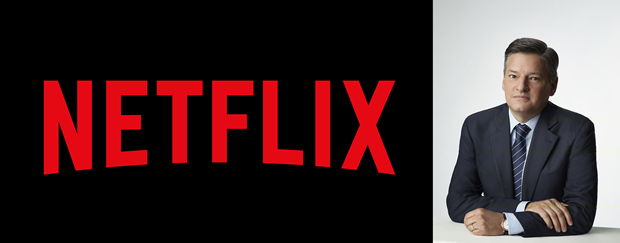The 'Total Audience Measurement' tool
Ever wonder how Netflix knows which films to suggest to you? Or how Electronic Arts figures out the best platforms for Fifa? The answer: data collection and analytics. You're not special. You're just a number.
‘A Netflix original series’; /nɛtflɪks/; phrase
The precursor to an addictive season that books binge-watching as the only activity for the foreseeable future.
"I can't remember what daylight looks like. I blame Netflix."
The global information and measurement company, Nielson, has developed a ‘Total Audience Measurement Tool’; a ‘framework to give you a comprehensive view of your total audience’, as described on Nielson’s website. Nielson’s tool allows video distributers and advertisers the opportunity to track their total audience viewings. However the unique feature of the Total Audience Measurement Tool is that it takes into consideration the various video platforms, from live views to catch-up TV that may be available for two weeks from the original airing, to online platforms. This allows a more accurate measurement of the information of the viewers, rather than confining the data collection to live views which is not representative.

Nielsen’s latest Total Audience Report Q1 shows that subscription video-on-demand services (SVOD) used in US households has increased from 42% the previous year, to 50%. This depicts the growth of SVOD use, and therefore the importance of collecting viewer data from these devices as well as from live TV, to create an accurate representation of the viewers.
It would be assumed that a research company with a solution to offer representative data for video distributers, which incorporates multi-media devices and extends the data collection net to catch-up and on-demand viewers, would be welcomed with open arms. However, Netflix put up some resistance. Netflix’s Chief Content Officer Ted Sarandos was even reported to have said they will not release viewership data “for as long as we can”, to journalists at the kickoff of the semi-annual TV Critics Assn. press tour. Netflix refuses to share its data with Nielsen, and why shouldn’t they?
However, Lynda Clarizio, Nielsen’s President of US media disclosed some revealing information about the research company when asked for the ratings for Netflix’s award-winning series Orange is the New Black by TheWrap: “I can’t right here and now. And for confidentiality purposes, I can’t say that its Orange is the New Black versus another programme. But someone asked me whether some of the big programmes on Netflix are working with us, and the answer is yes.” Whether or not Netflix is collaborating with Nielsen to analyse its ratings, Nielsen is finding a way around them.
Despite having no advertisers to please, as a $30bn corporation, Netflix still has shareholders to reassure; though they reserve the right to withhold ratings information so long as the proof is in the profits. Netflix already has its own data collection system, and a recommendation algorithm dubbed as ‘Netflix quantum theory’ which provides users with personalised suggestions, as a result of micro-categories for genres. Netflix already uses its data to improve customer experience, and predict viewing habits, and the release of their ratings from their data collection, could arguably just lead to investors and producers wanting to influence the decisions made with regards to Netflix’s original content. Ted Sarandos announced at the TCA winter press tour that Netflix expects to spend $6bn cash on its original programming, this kind of investment might sway investors to err on the side of caution and go with the status quo, to guarantee views.
Whilst other companies such as CNET network, BBC, and Time Warner use Nielsen for their data collection and analysis services to retrieve statistics from various multi-media platforms, and not just live broadcasts, the real trouble will come in the second quarter of 2016, as Steve Hasker, Global President and COO of Nielsen, said to Adweek: “The next step for us is to move to a syndicated product, whereby everybody sees everything.” Whilst Nielsen will help companies optimise their video distribution and content through the analysis of previous releases, through the syndication of this data, companies will have access to their competitor’s figures. This will mean they have the information to find out what videos are succeeding over others, and which platforms are monopolising the industry, though Netflix will be safe from this.
The next step for Nielsen is to be taken with Time Warner in a joint study to examine how virtual reality affects the subconscious; taking market research to the next level to understand how viewers react emotionally to video content.


